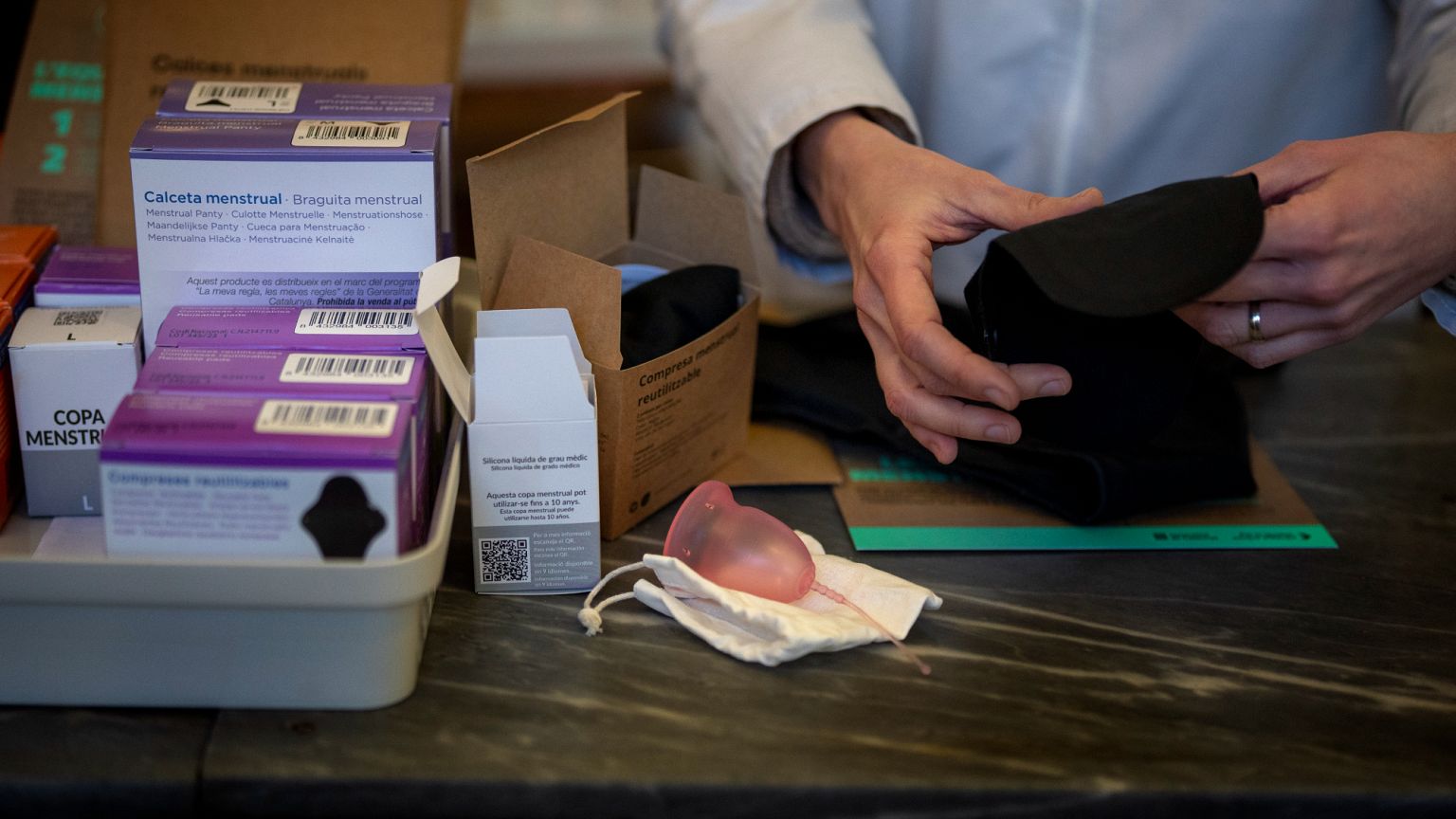Health
New Study Confirms PFAS in Reusable Menstrual Products

A recent study has raised significant concerns about the presence of toxic chemicals known as per- and polyfluoroalkyl substances (PFAS) in reusable menstrual products. Conducted across North America, South America, and Europe, the research revealed that items such as period underwear and reusable pads contain alarming levels of these substances, prompting discussions about the safety of eco-friendly menstrual items.
Published in the journal Environmental Science and Technology Letters, the study tested 59 products across five categories: period underwear, reusable pads, reusable incontinence underwear, reusable incontinence pads, and menstrual cups. The findings indicated that nearly 30 percent of the tested products contained intentionally added PFAS, with period underwear and reusable pads demonstrating the highest levels. In a more focused analysis of 19 selected products, PFAS were detected in all samples.
According to Marta Venier, an environmental chemist at Indiana University, the distinction between intentional and unintentional PFAS presence is crucial. “When levels were above a certain threshold, that indicates that PFAS were added to the product intentionally to impart properties such as waterproofing,” Venier explained. This highlights that some products can be made without these harmful chemicals, suggesting that PFAS are not essential for functionality.
As for the health implications, PFAS, often termed “forever chemicals,” are linked to various adverse health outcomes. A 2023 report from the World Health Organization (WHO) classified two PFAS—perfluorooctanoic acid (PFOA) and perfluorooctanesulfonic acid (PFOS)—as carcinogenic or possibly carcinogenic to humans. These chemicals have been banned in the European Union due to their potential to accumulate in human and environmental systems over time.
The health risks associated with PFAS exposure are particularly concerning for women. Tina Kold Jensen, a physician and environmental epidemiologist at the University of Southern Denmark, noted that these chemicals can negatively affect newborns due to maternal exposure. “You are exposed to these substances through hygiene products, then it will take at least four years before half of what you’re exposed to is out of the body,” Jensen stated. She added that maternal exposure can lead to the transfer of these chemicals through the placenta and breast milk.
While research continues to evolve, the specific health effects of the over 10,000 known PFAS compounds remain inadequately understood. Jensen emphasized the importance of further studies to clarify the potential risks of direct skin contact with these products versus environmental exposure.
Given the rise of sustainable menstrual products among younger demographics, questions remain about their safety. A 2022 study in Spain indicated that the use of reusable hygiene products surpassed that of disposable ones among individuals aged 26 to 35. Initiatives, such as the one launched by the Catalan government in March 2022, aim to distribute free menstrual cups and reusable pads to combat period poverty and reduce waste.
Despite the concerns regarding PFAS, reusable menstrual products are typically regarded as safer than single-use items. According to a global review, the primary health risks associated with these products include skin irritation from long-term use or improper cleaning. A separate study on menstrual cups indicated that they are generally safe, with rare exceptions of complications like toxic shock syndrome.
Concerns about PFAS are not limited to reusable products. In 2022, tests commissioned by consumer watchdog Mamavation found that PFAS were present in 48 percent of disposable sanitary pads and related items. This raises the need for ongoing research to better understand the types of PFAS present in both reusable and disposable menstrual products and their possible health effects.
As discussions around the safety of menstrual hygiene products continue, the presence of PFAS remains a critical issue that warrants further investigation. The findings from recent studies underscore the importance of transparency and safety in the design and production of menstrual products used by millions worldwide.
-

 Top Stories3 months ago
Top Stories3 months agoTributes Surge for 9-Year-Old Leon Briody After Cancer Battle
-

 Entertainment4 months ago
Entertainment4 months agoAimee Osbourne Joins Family for Emotional Tribute to Ozzy
-

 Politics4 months ago
Politics4 months agoDanny Healy-Rae Considers Complaint After Altercation with Garda
-

 Top Stories4 months ago
Top Stories4 months agoIreland Enjoys Summer Heat as Hurricane Erin Approaches Atlantic
-

 World5 months ago
World5 months agoHawaii Commemorates 80 Years Since Hiroshima Bombing with Ceremony
-

 Top Stories3 months ago
Top Stories3 months agoNewcastle West Woman Patricia Foley Found Safe After Urgent Search
-

 Top Stories5 months ago
Top Stories5 months agoFianna Fáil TDs Urgently Consider Maire Geoghegan-Quinn for Presidency
-

 World5 months ago
World5 months agoCouple Convicted of Murdering Two-Year-Old Grandson in Wales
-

 World5 months ago
World5 months agoGaza Aid Distribution Tragedy: 20 Killed Amid Ongoing Violence
-

 World5 months ago
World5 months agoAristocrat Constance Marten and Partner Convicted of Infant Murder
-

 Top Stories4 months ago
Top Stories4 months agoClimbing Errigal: A Must-Do Summer Adventure in Donegal
-

 Top Stories4 months ago
Top Stories4 months agoHike Donegal’s Errigal Mountain NOW for Unforgettable Summer Views









